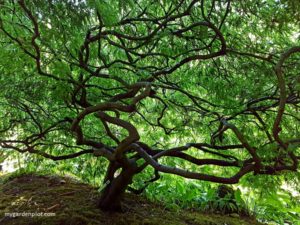Growing Skimmia Japonica
Growing Skimmia japonica (Japanese Skimmia) is easy. They are reliable evergreen shrubs. Learn how to care for this shade-loving plant.
Pruning Tips: When To Prune Plants And What Pruning Tools To Use
We often hear about the 3 Ds of pruning. We think it should be the 4 Ds: dead, diseased, damaged, and let’s add disorderly to that list – we have all seen a branch or stem that goes entirely against all others, you know, just doing its own thing. So for us, it’s the 4 Ds: Dead, Diseased, Damaged And Disorderly.
Buyer’s Guide:
Why Prune?
Why prune? To maintain healthy and attractive plants in the garden. There are times when it is important to prune and eliminate crossing and rubbing branches to reduce congested growth and foster healthy conditions to discourage diseases. Pruning additionally improves a plant’s shape to make it more attractive by correcting its natural form. Of course, removing unwanted growth and thinning out twiggy or straggly stem redirects the energy to more vigorous and healthy branches. We also often need to train a young plant to set it in the right direction for an appealing form or encourage better flower or fruit production. Perhaps you need to prune to reduce the plant size or remove hazardous branches that are in the way of a path or potentially damage property – this type of pruning is best left to a professional arborist and hiring a reputable team to do the job, especially when it comes to large trees.
Whether pruning to balance growth, removing dead or disease stems, doing routine annual cuts, renovation or hard pruning, plants’ requirements will differ. In each of the plant recommendations below, we’ve added notes on how and when to prune it.
Growing Skimmia japonica (Japanese Skimmia) is easy. They are reliable evergreen shrubs. Learn how to care for this shade-loving plant.

The beautiful Japanese maple tree is valued in many gardens. Learn more about these trees and how to plant, care and prune Japanese maples.
The Smoketree (or smoke tree) also referred to as Smoke Bush or Wig Tree is easy to grow. Tips where to plant, how to care and prune this plant.
Care tips how to grow, maintain and prune a weeping or laceleaf Japanese maple tree. Recommended varieties for your garden.
Passiflora caerulea or blue passion flower thrives in cooler regions. Here are care and pruning tips and how to grow this vine in the garden.
Learn where to plant and how to care for hydrangeas. Information on the various types of hydrangea shurbs and climbers and tips how to prune.
Lavandula, better known as lavender, is famous for its fragrant flowers. Learn where to plant, how to care, grow and prune lavender plants.
Hardy and half-hardy fuchsias are easy to care for and propagate. Here are guidelines how to plant, grow, prune and overwinter fuchsias.
Do you have the right garden tools? Here is an essential list gardening tools and equipment. From pruners to crop protection for vegetables.
How to plant, care and prune your flowering dogwood tree. Learn about Cornus Kousa and Cornus Nuttallii and other recommended dogwood trees.
The Philadelphus or mock orange is an easy-care deciduous shrub. Learn more about planting, pruning and growing a mock orange in your garden.
Learn how to plant, care and prune clematis. Tips on practical needs for growing this flowering vine in your garden or in a container.